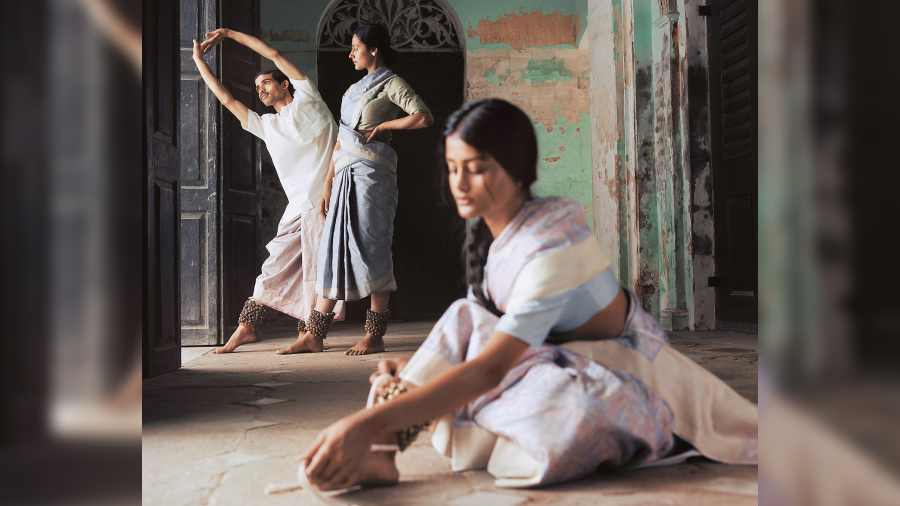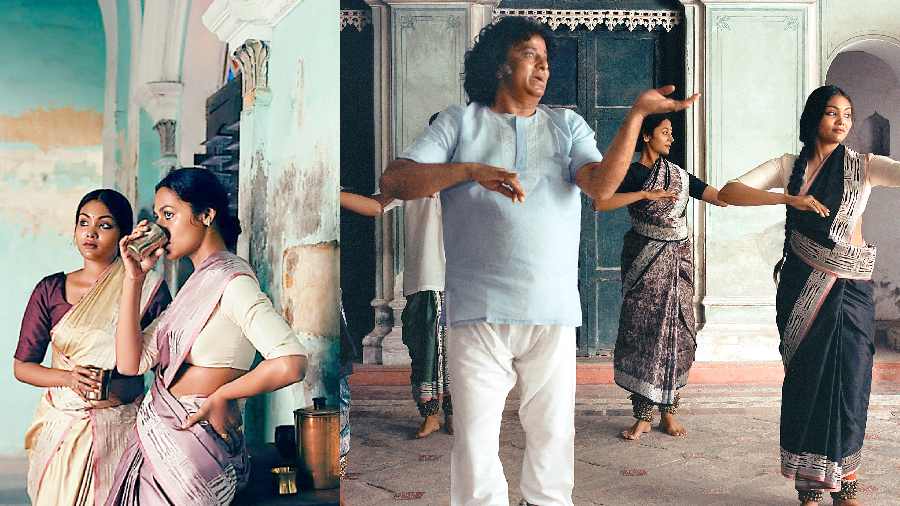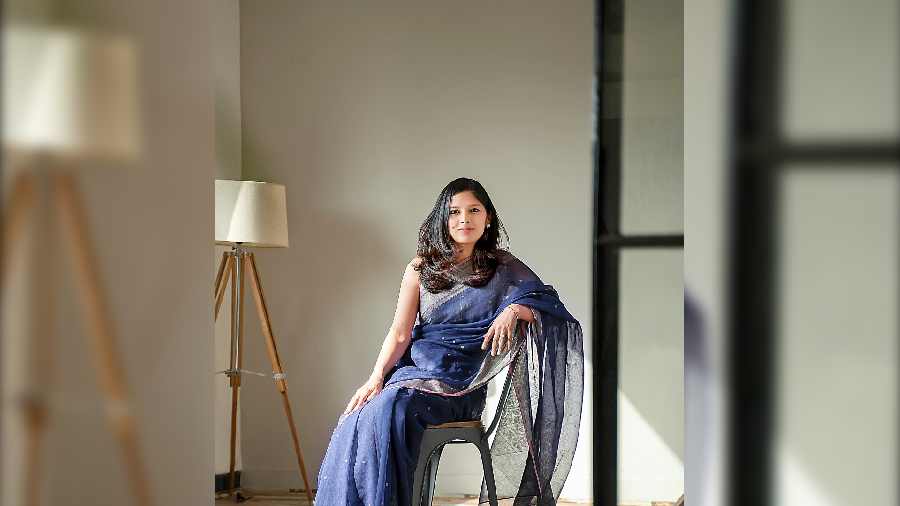Set in the milieu of Kathak, Tilfi Banaras’s Katha is a narrative of contemporary elegance and raw earthy charm. Aditi Chand, co-founder & CEO of Tilfi Banaras, decoded the concept for The Telegraph.
The campaign looks so beautiful...
Thank you so much. It took a lot of effort. The idea was something novel and close to our hearts. I am glad it has been translated. We shot the campaign in Benaras so it takes us back to where it all begins. It was the coming together of a lot of things. Bikramjit (Bose) is a phenomenal photographer. He is the reason why the pictures look the way they do.
The idea behind the campaign is something we have been dabbling with for a while. Pandit Ravi Shankar Mishra is a famous Kathak exponent from Benaras, which is our home city. There are so many cultural relationships that we have in Benaras and it is a melting pot of different arts with a lot of microcultural centres. Their skills run deep and they are truly the masters of their craft but it is not something that is presented very often. Beyond a few people who pursue these classical art forms or technical craft forms like what we do, they don’t find that sort of platform. We thought that this was a story for us to tell.
We wanted to do something that brings these artistic talents of Benaras to the fore. How it found its expression in what we did with the campaign for Katha, is that we wanted to trace the journey of how skills are transmitted in anything that is an artistic pursuit. It ties in well with what we do. The kind of handloom textiles that we make has a structured apprenticeship process. You cannot weave the saris we weave as a novice. It requires decades of practice under the guidance of a master.
The kind of respect, compatibility and gentle prodding that a master brings to his craft and therefore to his students is what we wanted to highlight in the campaign. We did that through the lens of Kathak because the Benaras gharana is a reputed one for Kathak.

Are the models used in the campaign professional performers?
All of them are students of Kathak. They are at different stages of their learning and we wanted to shoot it in a way like we are like a fly-on-the-wall approach. We let them dance like they would in their regular environment. Pandit Ravi Shankar Mishra also features. He was actually taking the class and just watching him teach was such a privilege. He was a student of Sitara Devi and I cannot convey the feeling you get when you watch him perform. Sitara Devi had told him that a true master of Kathak can move his feet to the degree that he’ll start like a thunderstorm and slow it down till you can hear a single ghungroo ring. If you can do that, that’s when you have perfected it.
Is this your most experimental collection?
I’d say so. We keep experimenting a lot, but this is different. There are a thousand ways to make a rose look beautiful and we will make the saris with the most beautiful representation of roses, but we have tried to move over the years into abstracts and we have dabbled in different schools of art like optical art in our last collection and we have also done more geometric figures with an art deco-inspired collection lately. This was also in that realm of playing with abstract art. We have tried to replicate the idea of a texture visually. From the beginning, we have tried to straddle both tradition and innovation and not to say one is more important than the other.... You have to have that room to experiment. That is how it’ll grow. Otherwise, everything will stagnate.
The saris are very young...
A lot of what we do as a brand has been around a lifestyle. A lot of classical pieces that we do are not oriented towards weddings alone, even though that’s the connotation of a Benarasi textile. No Bengali bride would think otherwise, right? Of course, that is the home turf. Obviously, you will always maintain that association. It’s sad when people don’t opt for the classics, but the general idea of what we have done with Tilfi always, even in our classical weaves, is to look at them as pieces of art which can be worn by anyone.

They are contemporary...
That is in the choice of colours, the way the placements are. All of that gives them versatility....
We love the idea of gender fluidity that seems seamless...
We don’t set out to make these statements. Sometimes a lot of people write to us about our choice of models, thanking us for choosing the faces and body shapes that we do. None of it is a conscious choice. When we decided to portray a Kathak class in action, the guru is male like a lot of Kathak gurus in Benaras are and so are a lot of students. It did not occur to us that it’d be contrary to have a male dancer in a sari campaign. It was a natural portrayal and that is why it translated so effectively.

ADITI’S CLASSIC PICKS...
1 A cotton jamdani which you can style up or down. It could be a simple suti which you could wear to a day function or a beautiful, real zari jamdani which you could wear to a wedding or a conference.
2 A satin tanchoi in a pastel tone which you could wear in the morning or a more figured zari version which you could wear in the evening.
3 A georgette and because it is so fluid, you can style it in a multitude of ways.
4 Use a brocade in an experimental way. Like a pantsuit for that matter or a skirt.
5 A beautiful zari jangla whether it is a shikargah or a baluchari or a traditional floral pattern, which is like a keepsake.
